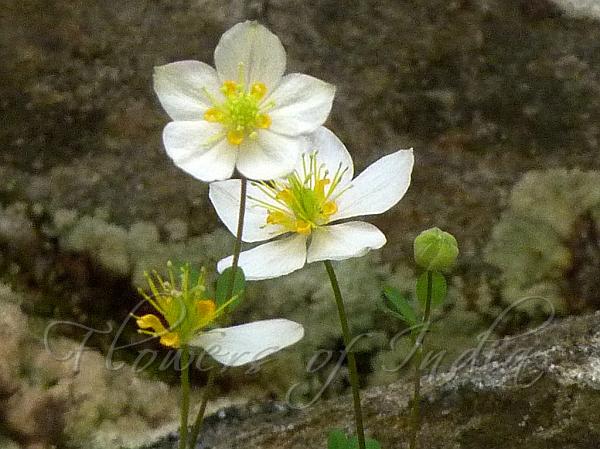|
| Anemone Isopyrum |
|

|

| File size | 263407 |
| Original date | 6/23/15 3:00 PM |
| Resolution | 2560 x 1920 |
| Flash | Flash did not fire, auto |
| Focal length | 108.0mm |
| Exposure time | 1/125s |
| Aperture | 5.2 |
| Focus Distance | |
| Metering Mode | Multi-segment |
| Camera make | Panasonic |
| Camera model | DMC-FZ40 |
| Sensor type | OneChipColorArea |
|
|
|
|
Photo: |
Botanical name: Isopyrum anemonoides Family: Ranunculaceae (Buttercup family)
Synonyms: Paraquilegia afghanica, Paropyrum anemonoides, Thalictrella anemonoides
Synonyms: Paraquilegia afghanica, Paropyrum anemonoides, Thalictrella anemonoides
Anemone Isopyrum is a delicate perennial herb with
flowers resembling Anemones, borne 2 or 3 together. Bracts are ovate,
3-lobed to 3-cut. Flowers are white, 1.5-1.8 cm across, flower-stalk
up to 7 cm long, hairless. Sepals are petal-like, elliptic to obovate,
7-8.5 x 4-5 mm, tip rounded to blunt. Petals are small oblong, 2.5-3
mm, basally tube-like. Stamens are about 20, filaments 4.5-5 mm;
anthers about 0.5 mm. Pistils 2-5. Stem is soft, 10-23 cm tall. Basal
leaves are numerous, hairless; leaf-stalk 3.2-9 cm; leaf blade
triangular, up to 6.5 cm wide; central leaflet leaflet-stalk slender;
leaflet blade rhombic to obovate, 1-1.5 x 1-1.5 cm, 3-foliolate to
3-parted; segments unequally 2- or 3-parted or lobed, entire at tip or
with 3 blunt teeth. Stem leaves are 1 or 2, similar to basal leaves but
smaller. Anemone Isopyrum is found in forests, grassy slopes, at
altitudes of 2300-3500 m, from Central Asia to N. China and W.
Himalaya.
Flowering: June-July.
| Identification credit: Anzar Khuroo | Photographed in Lahaul valley, Himachal Pradesh. |
• Is this flower misidentified? If yes,